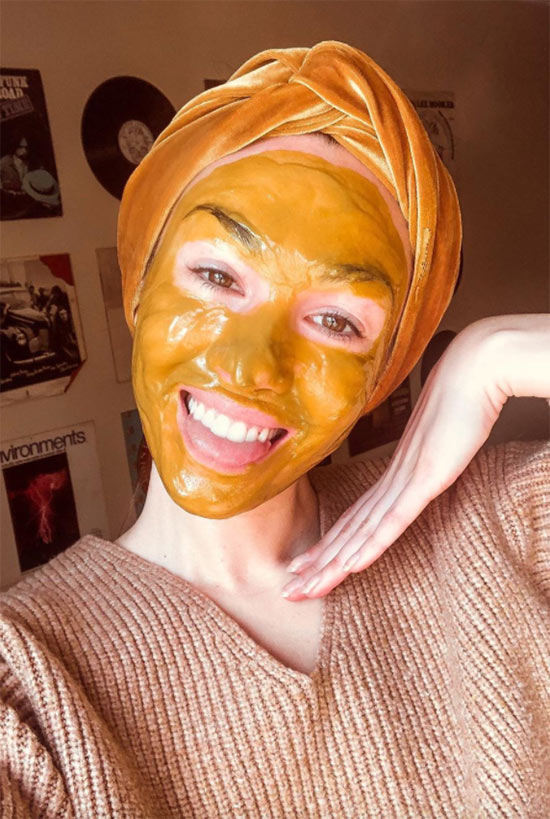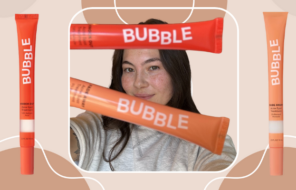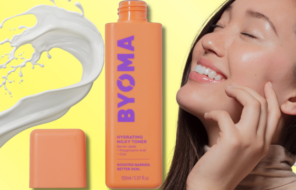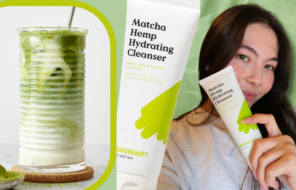Have you tried turmeric for skin yet? As my stained cookware will attest, I’m a big fan of turmeric in my food, but incorporating it into my beauty routine was an intriguing notion. I was happy to learn that as a skincare ingredient, turmeric extract does not leave a bright yellow stain on everything it touches!
This tasty ingredient is becoming more and more popular in skin care these days, and for a good reason. The Ayurveda staple is now popular in many other wellness practices, thanks to its reputation as an antioxidant and anti-inflammatory. The benefits of turmeric in skin care are many, and as an ingredient, it is gentle and light, so it can work for all skin types.
In this article, I uncovered the origin of turmeric and its health benefits and how they relate to the skin. Finally, I give advice on how you can use turmeric in your skincare routine, including a simple DIY turmeric mask recipe.
In this article:
- What Is Turmeric Extract and How Does It Work?
- Turmeric Benefits for Skin
- How to Use Turmeric for Skin
What Is Turmeric Extract and How Does It Work?
Turmeric is a flowering plant from the ginger family that is native to Southeast Asia and the Indian subcontinent. You might already be familiar with the powder crafted from its rootstalk, which is used as a spice in a variety of cuisines and also as a yellow coloring agent. Turmeric has a long history as ayurvedic medicine for a variety of ailments.
The active ingredients in turmeric are curcuminoids, phenolic compounds that give turmeric its bright yellow color and are also said to have potent antioxidant and anti-inflammatory effects. They are the reason why turmeric lattes and pills have become so popular in recent years, although, in reality, the jury is still out on whether turmeric is actually bioavailable when consumed. However, topically, it seems to make a difference!
Turmeric Benefits for Skin
Turmeric extract is gentle and non-comedogenic, so it can be helpful for all skin types. Its main benefits, however, are as an anti-inflammatory and antioxidant that helps to improve the condition of red, stressed or irritated skin. Topically, it’s also promising as a wound-healing agent, although probably not when it comes from cosmetic formulations.
As a soothing agent, turmeric can help bring down redness associated with both acne and sensitive skin conditions, leaving the skin looking clearer and brighter. As an antioxidant, it offers anti-aging effects by helping to neutralize the damage caused by UV rays and pollution, helping to maintain the youthful appearance of the skin.
It also has a reputation as a brightening agent, although the only promising study conducted on the topic tested it in conjunction with niacinamide, so it’s likely the effect came from the combination rather than turmeric alone.
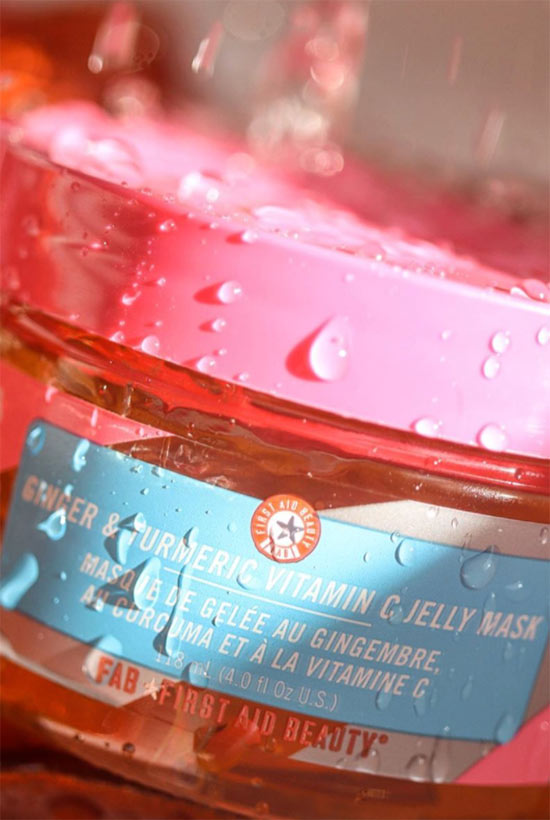
How to Use Turmeric for Skin
Turmeric is used in all kinds of skincare products, including cleansers, toners, masks, exfoliants, serums, and moisturizers. Because it’s so mild, you can even have a skincare routine where every product includes turmeric! You don’t need to change anything up when using turmeric for skin but just follow the product directions as you would for any skincare product.
DIY Turmeric Mask
The fun thing about turmeric is that it’s really easy to use in DIY masks! If you’ve been reading our skincare articles regularly, you know that masks are one of the few product categories I think you can make at home safely because they’re not meant to last – you make your mask, you use it, and that’s it until the next time! You don’t need to worry about spoilage or preservatives.
This recipe calls for ingredients you probably already have in your kitchen that help to soften, soothe, and hydrate the skin but are non-comedogenic, so they are appropriate for all skin types.
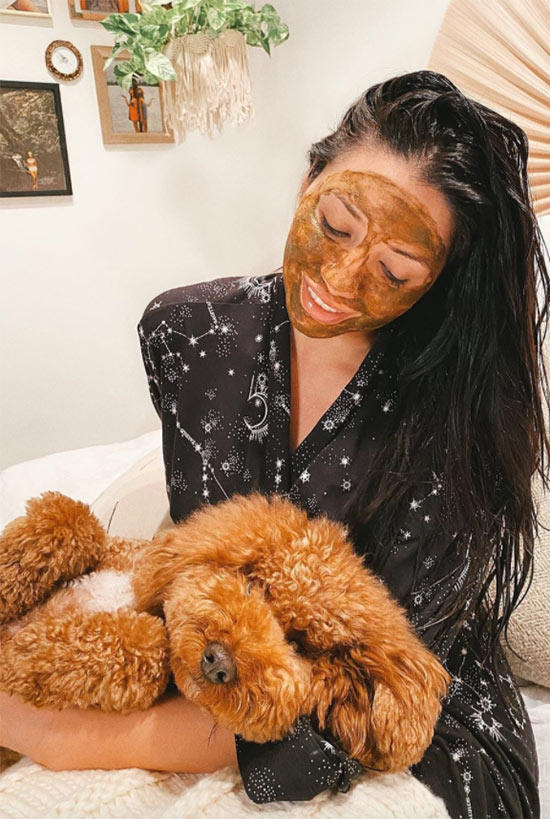
You will need:
• 1/2 tsp of honey
Honey is wonderful for the skin because it’s hydrating and soothing but also has some mild anti-microbial effects, so it can also help with acne. Organic, floral honey is great, but if you really want to up your game, you can use manuka honey. On the other hand, if all you have is generic honey, you can use that as well, and it’ll still have hydrating effects.
• ¼ tsp of turmeric powder
You can use typical store-bought turmeric, but be aware that it might stain your skin a little yellow, and it can take a day or two for the stain to totally disappear. This isn’t a big deal now that we’re all socially isolating, but if this is your first time trying it, make sure you don’t have an important appointment in the coming days.
• 1 tsp of yogurt
Plain yogurt is really important in this recipe because it helps prevent some of the turmeric staining. It also has probiotic components that help to fortify the skin and lactic acid that helps to increase moisture in the skin (although, as far as we know, it’s not enough to exfoliate the skin, despite what some sources say).
• Other Potential Mix-Ins
While these basics are our easy favorites, you can add other things into your homemade turmeric mask! Chickpea flour is one very popular addition that gives the mask a more spreadable, paste-like texture as well as an amino-acid and nutrient boost. If you have sensitive skin, you can add oat powder instead. If your skin can tolerate essential oils, you can add your favorites for some aromatherapy, while if you have dry skin, you can include your favorite plant oil.
To use:
Making the mask is very simple! Just mix all of the ingredients in a bowl until they are well combined, using a clean mask brush like in this set from Amazon. Then, cleanse your skin and apply the mask with the brush, using upward strokes and making sure to cover every inch of skin. Make sure to avoid the eye area!
Wait 5-10 minutes and then risk the mask off. Whereas we normally recommend exfoliating first and then masking, you can actually rely on a gentle physical scrub to help remove any yellow stains from your skin a little more quickly. Finally, finish things off with the rest of your routine, including toners, serums, and moisturizers.
If you have any mask residue leftover, don’t save it for later – just throw it away.
Photos via @nicoleincolour, Instagram

